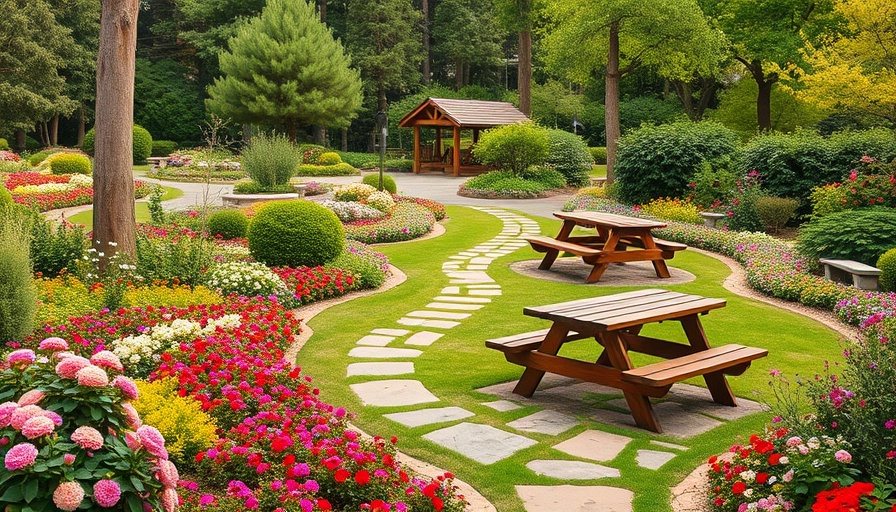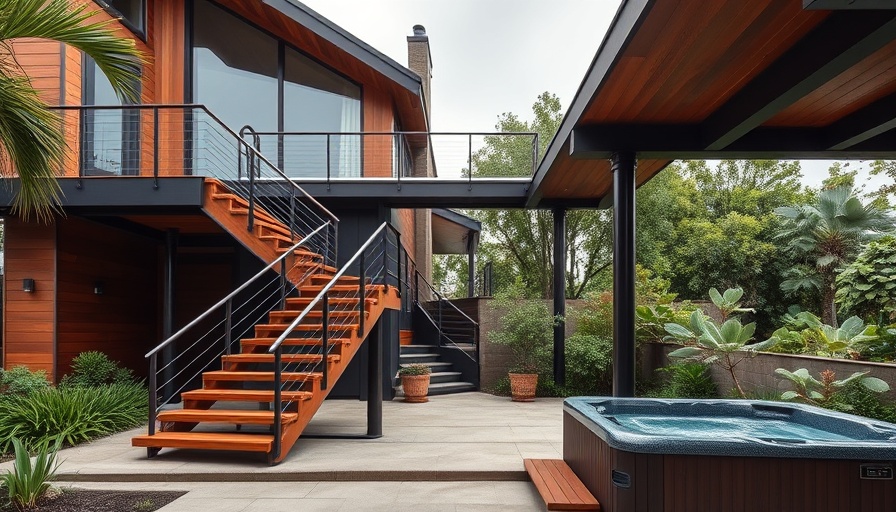
Discover the Path to a Beautiful Garden
Creating a stunning pathway in your garden is more than just a walk through greens; it’s a journey that connects your indoor spaces with the beauty of outdoor living. Paths can serve various functions, from guiding guests to their destinations to encouraging exploration of hidden areas in your garden. Making informed decisions about the design, materials, and aesthetics of your walkway can substantially enhance your outdoor space, making it not only more functional but also visually captivating.
The Importance of Pathways in Garden Design
Pathways are essential elements in any garden, acting as the veins that connect all parts of your outdoor environment. They create a welcoming atmosphere for family and friends while encouraging leisurely strolls through your garden. A thoughtfully designed pathway can lead to multiple pockets of your yard, revealing charming corners and stunning views tucked away in your landscape. In California, where outdoor living is emphasized, integrating well-designed paths can significantly enhance the appeal and functionality of homes.
Material Choices: Finding the Right Fit
Choosing the right materials for your garden path is critical. Options range from sleek concrete pavers that provide a modern, clean aesthetic to more rustic gravel paths that complement natural landscapes. Each material has its own advantages:
- Concrete Pavers: Durable and versatile, available in various colors and designs, making them suitable for contemporary gardens.
- Gravel: Budget-friendly and easy to install, gravel provides excellent drainage and can create a relaxed, informal feel.
- Natural Stone: Each stone has a unique character and offers an organic touch, making it ideal for traditional garden styles.
- Timber Planks: Bring warmth to any outdoor space, but ensure they are treated to withstand weather conditions.
- Repurposed Materials: Eco-friendly options like old bricks offer a nostalgic charm and sustainability.
Design Basics: Form Meets Function
When crafting your pathway, consider the overall design of your garden. A straight path tends to suggest formality, while a winding path can create a more whimsical feel. Always aim for a balance:
- Proportion: Paths should match the scale of your garden; narrow paths suit smaller spaces while wider walkways are perfect for larger areas.
- Negative Space: Allow space around the path to highlight it, contrasting clean lines against lush greenery.
Laying the Groundwork
Execution is key when creating your pathway. Start by marking where you want the path to be, using a temporary layout to visualize its form. Once you’re satisfied with the design, prepare the ground and choose appropriate materials.
Tips for Maintaining Your Garden Pathway
A beautiful path requires regular attention. Maintenance tips include:
- Regular Cleaning: Keep your path clear of debris to maintain its inviting appearance.
- Edging: Installing proper edging keeps gravel contained and prevents erosion.
- Drainage: Ensure pathways are slightly sloped to guide rainwater away from problem areas.
Cultural Resonance: Connection to Nature
In California homes, where nature is revered, pathways can serve as visual and environmental connectors. Integrating plant life alongside your paths enhances both the beauty and habitat of your garden. Bold flowers and aromatic plants can guide your journey while fostering biodiversity. Think about how your path invites you to slow down and appreciate the space around you.
Conclusion: Step into Your Dream Garden
Creating an appealing pathway for your garden isn’t just an aesthetic improvement; it's an invitation to embrace the outdoors. Imagine sitting by your beautiful path, enjoying the sights and sounds of your surroundings. By investing time and effort into your garden paths, you not only elevate your landscape but also enhance your daily living experience.
 Add Row
Add Row  Add
Add 




Write A Comment